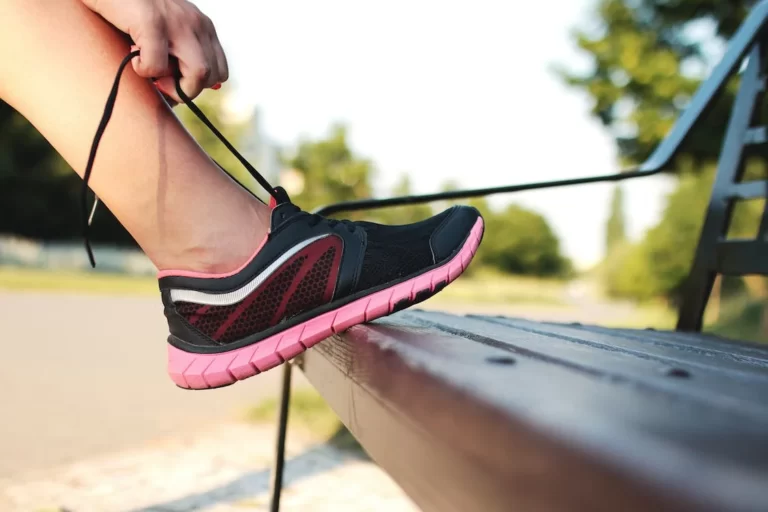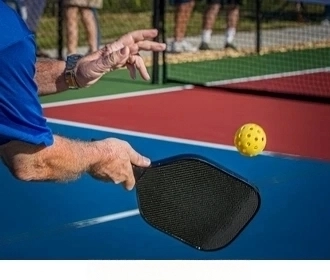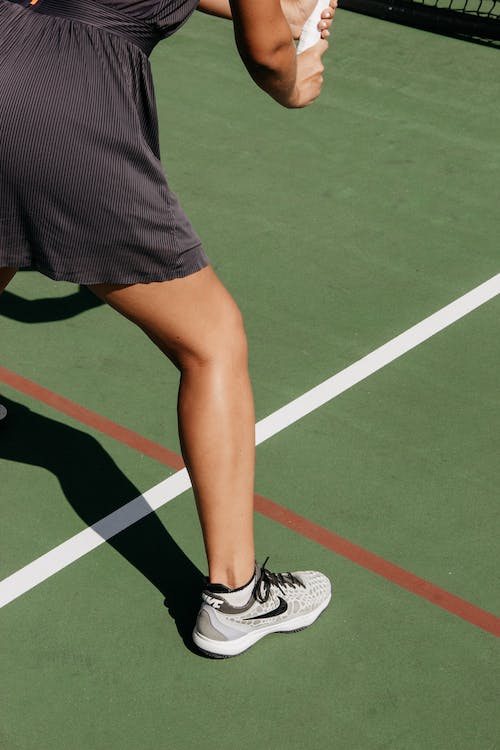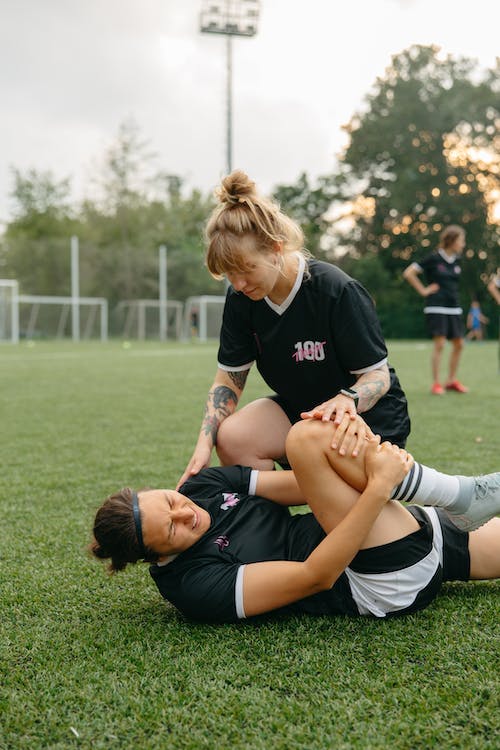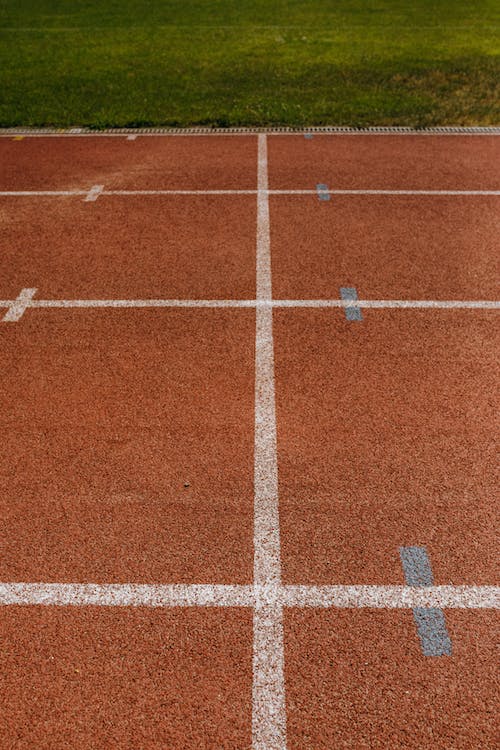Can You Play Pickleball Without a Net? A Complete Guide
Do You Need a Net to Play Pickleball? No, you do not strictly need a net to play pickleball. While playing pickleball without a net is not an easy task,. Nets have traditionally been a core piece of pickleball equipment, it is entirely possible to play the game without one. By using ground markings and some modified rules, you can set up a pickleball court almost anywhere and enjoy a competitive game without the need for poles, nets, or any special equipment.
In this article, we’ll cover everything you need to know to play a fierce match of pickleball without a net. We’ll discuss how to set up a regulation-sized court, serving and volleying techniques, strategy adjustments, rule modifications, equipment needs, and where to find places to play netless pickleball.
We’ll also highlight the many benefits this innovative approach offers players. If you want to take your pickleball game to new places, playing without a net is a great way to mix things up.
Why play pickleball without a net?
Playing pickleball without a net makes the game far more portable and flexible. Without having to haul around net posts, clamps, and other equipment, you can set up a pickleball court and start playing almost anywhere – driveways, empty parking lots, playgrounds, parks, beaches, campsites, and more.
It also avoids the cost of purchasing a net system, which can run $100 or more. If you just want to try out the sport or don’t play frequently enough to justify the investment, going net-free allows you to save money.
While playing without a net requires some adjustments, you can still get a great workout with plenty of exercise. The game still involves the same running, lunging, and quick reactions. And you can certainly still have fun and enjoy close competition with friends or family.
Many casual players have embraced the ability to play pickleball without a net. I’ve seen makeshift courts set up in neighborhoods, at campgrounds, and on playground blacktops. Temporary outdoor setups are a convenient way to introduce the game to new people too.
Overall, the portability, affordability, and flexibility of playing netless pickleball make it an appealing option for certain players and situations. It opens up a lot more possibilities for where and when you can play this fast-growing sport. Whether played in the backyard or a school gym, net-less pickleball lets everyone enjoy this versatile sport.
Setting Up The Pickleball Court (Pickleball Net Considerations )
Use chalk, tape, or cones to clearly mark the outer court lines and non-volley zone lines. Having visible court boundaries is crucial when playing without a net barrier. Make sure to accurately measure and draw the regulation court dimensions – 20×44 feet for doubles play.
The non-volley zone, also known as the “kitchen,” should be designated 7 feet back from the imaginary net on each side. This no-volley area can be marked with chalk, tape, or cones. Consider using a portable barrier if one is available.
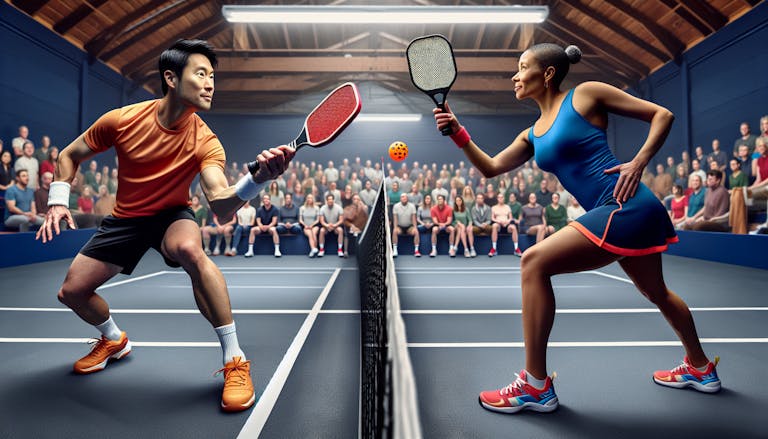
Without a net, the service boxes become imaginary squares on each side of the non-volley zone. Use your chalk or tape to mark these service boundaries. You’ll also need to establish some modified service rules since you can’t serve over the net.
While having accurate court dimensions is ideal, it’s not absolutely essential for casual pickleball games without a net. Feel free to modify court sizes as needed for your available space. The key is keeping some boundaries in place to preserve the flow of the game.
Since pickleball without a net is similar to badminton without a net, the same court dimensions can work well. But court markings are crucial for delineating key zones like the non-volley area. Take time to measure and mark the court for the best results.
Serving in Pickleball Without a Net
Here are some additional tips for serving successfully in pickleball without a net:
- Start your serving motion lower to the ground to help place the ball accurately. Bend your knees and keep the paddle low.
- Use a gentle underhand toss when serving. Toss the ball only slightly above the paddle height.
- Aim to bounce the ball deep in the service box to make returning tougher. Skim the ground to limit height.
- Vary placement – go wide, down the middle, or short. Don’t let your opponent anticipate the serve spot.
- Spin serves can be effective in moving the ball sideways after bouncing.
- Call lets if the ball clips a court line on the serve and reserve.
- Overhand swinging can result in too much loft. Use a smooth sidearm swing instead.
- The server should announce the score loudly before serving for clarity.
- If no barriers, retrieve stray balls quickly to keep play moving.
- Stay behind service lines until the ball bounces during the opponent’s serve.
The main goal is to keep serves low with varied placement. With some adjustments, you can successfully serve without a net obstacle.
Returning Serves in Pickleball Without a Net
Here are some tips for returning serves effectively when playing pickleball without a net:
- React quickly and move up on shorter serves. Without having to clear a net, serves will bounce faster.
- Lower your paddle angle on returns to bounce the ball low over the non-volley zone. Keep returns tight to the ground.
- Aim for open spaces on the court rather than power. Place the ball away from your opponent.
- Consistency is key. Get your returns in play and avoid hitting balls into the non-volley zone.
- Use blocking returns to redirect speedy serves back to open areas.
- Take serves as early as possible after one bounce to rush the server.
- Vary return placements: down the sideline, crosscourt, or down the middle.
- Call lets if serves nick the line to avoid instant losses.
- Communicate with the doubles partner to coordinate positioning.
The main focus is keeping returns low, placing them strategically, and maintaining control. Master these skills for effective returns without a net barrier.
Rallies and Volleys

- Keeping the ball low is key for rallies without a net barrier. Strike the ball with control and a downward angle to bounce it deeper.
- When volleying, move in quickly to intercept the ball before it bounces. Volleying from the service line can be very effective.
- Utilize frequent dinking and drop shots to control the pace and keep your opponent moving.
- Watch the non-volley zone carefully when hitting volleys. Make sure to stay behind the lines.
- Move forward decisively when a ball sits up for a volley. Don’t allow easy mid-court volleys.
- Hit volleys and groundstrokes accurately to the deep corners. Make your opponent run.
- Lobs and moonballs are useful shots to change pace and move opponents back.
- Communicate constantly with your doubles partner during rallies.
The main focus is controlling the height of shots while being aggressive on volleys. Keeping the ball on the ground is vital for effective no-net rallies and volleys.
Scoring and Rules Modifications
Here are some potential rules and scoring modifications to consider when playing pickleball without a net:
- The basic rules and scoring of pickleball still apply, including the two-bounce rule and non-volley zone restrictions.
- No-ad scoring can be implemented to speed up play. This eliminates the advantage rule – any deuce point wins the game.
- Since there is no net to hit, you’ll need to decide how you’ll handle “net” calls. Options include replaying let serves or assigning to the serving team.
- Agree ahead of time on fault rules for extremely low serves. You may choose to fault serves bouncing twice before the service line.
- Service lets can be called if balls nick the side service lines to avoid instant losses.
- Establish fault rules if serves are too high or lofted. A waist or head-height limit is reasonable.
- Assess service foot faults for players crossing the baseline during serves.
- Handshake line calls with no referees. If opponents disagree on a line call, replay the point.
The official pickleball rules still provide a solid framework for netless play. Make a few common sense modifications as needed to fit your unique no-net context.
Advanced Strategies and Tips when Playing Pickleball Without Net
- Maintain constant communication with your double partner. Alert them to open spaces, line calls, and your intentions.
- After striking the ball, recover quickly to center court. Move into open areas to cover more ground.
- Employ more lobs and high moonballs to force opponents back and disrupt their positioning.
- Aim serves and returns at your opponent’s feet to generate weak returns. Keep them on the move.
- Master dinking shots like rapid-fire exchanges to control the flow of rallies.
- Vary spin on returns: topspin, backspin, and sidespin. This changes the ball’s movement after bouncing.
- Take advantage of windy conditions. Hit high looping shots with the wind at your back.
- Use slick, angled drop shots to pull opponents into the non-volley zone.
- Hug the non-volley lines when volleying to cut off angles.
The keys are court positioning, communicating with your partner, and using a variety of spins, heights, and placements to outmanoeuvre your opponents.
Equipment Needed
- You’ll still need pickleball paddles and balls. The same regulation equipment is used, including paddles approved for pickleball play.
- Proper court shoes, like tennis shoes, are required to provide traction and support when running and lunging.
- Chalk, tape, cones, or other markers are needed to designate court boundaries and lines. Measure accurately.
- While optional, a portable net or barrier for the non-volley zone is recommended. This provides a visual cue and minimizes disputes.
- A measuring tape is useful for laying out accurate court dimensions before marking lines.
- A broom or brush is handy for sweeping chalk lines off smooth outdoor surfaces when finished playing.
- Bring plenty of water to stay hydrated when playing in warmer weather.
The gear is simple and minimal compared to bringing full nets, posts, and accessories. The basics allow you to set up and enjoy a casual game virtually anywhere.
You may like: 7 BEST PICKLEBALL BAGS WITH SHOE COMPARTMENTS FOR WOMEN
Finding Places to Play Pickleball Without a Net
When it comes to finding places to play pickleball without a net, there are plenty of options available. You can make use of empty tennis or basketball courts, driveways, parking lots, and cul-de-sacs for a quick game. Parks, playgrounds, beaches, and campsites are also great locations to set up a makeshift court and start playing.
If you prefer indoor settings, indoor gym floors or multipurpose rooms can be used for indoor pickleball. Instead of the traditional setup for pickleball, which involves a net, you can opt for a portable pickleball net for outdoor pickleball. Whether you want to play casual games and practice sessions or dedicate time to drills to enhance your skills, there are plenty of places where you can engage in the sport.
If you’re interested in learning more about pickleball, let us introduce you to the standard pickleball court and net dimensions. A standard pickleball court measures 20 feet wide and 44 feet long, with a net height of 36 inches at the sidelines and 34 inches at the center.
To set up a makeshift net, you can use materials like rope or string to create a barrier that will hold up during play. Investing in durable and weather-resistant materials will ensure that your playing experience is not interrupted by rain or other elements.
The Benefits of Playing Pickleball Without a Net
Summary of pros: Playing pickleball without a net offers several benefits, such as portability, cost savings, and flexibility. Since you don’t need a net, you can easily set up a game in different locations and contexts, making it a versatile option for players on the go.
Forces you to focus on ball control and placement: Without the aid of a net, players are forced to concentrate on their ball control and placement to keep the game going smoothly. This can help improve dinking skills and low groundstroke technique, making players more precise and strategic in their plays.
Allows the game to be enjoyed in more locations and contexts: Without the traditional setup of a net in pickleball, the game can be enjoyed in a variety of settings, giving players the freedom to play wherever they please. This added flexibility opens up opportunities for more spontaneous games and fun outings with friends and family.
Conclusion
As we’ve covered, pickleball is a game that can absolutely be played without a net – all it takes is some portable equipment, court markings, and modified rules. The key benefits are increased portability, affordability, and flexibility in where you can play. While technique and strategy require adjustments like keeping shots low and placing accurately, the game still provides a terrific workout and competitive play.
The basics of pickleball—paddles, balls, and court footwork—remain intact even without a net barrier. For casual games or introducing newcomers, giving netless pickleball a try can open up a whole new world of possibilities for enjoying this fast-growing sport. All ages and skill levels can quickly set up and have a blast with pickleball, no net needed. So grab your paddle and a bag of chalk – let the netless fun and competition begin!
Frequently Asked Questions
Isn’t it pointless without a net?
Not at all! The game still provides great exercise and fun competition without a net. You focus more on control and placement than power. It improves skills like dinking, dropping, and placing the ball.
Do official rules allow no-net play?
There are no official rules prohibiting it. Most standard rules still apply. It’s generally viewed as a casual variant to make the game accessible anywhere.
What about bad weather with no barriers?
Windy conditions require more skill and adjustments. Light rain can still allow play on outdoor surfaces. Cancel play in heavy rain that makes the court slippery.
What if we disagree on line calls?
Agree ahead of time that if opponents dispute a line call, the point is replayed rather than arguing. Handshake it out and keep playing.
How do you practice dinking without a net?
Dinking rallies work great across an open court. Focus on exchanging soft shots with varied height and spin. You can still develop excellent touch this way.
Can I improve my game with no-net play?
Absolutely! Your control, accuracy, touch and quickness will all sharpen if you practice and play games without a net regularly.
What if my serves go too low?
Establish rules like re-serving if the ball bounces twice before reaching the non-volley zone. This avoids super low serves ruining play.
Is it good exercise without a net?
You definitely get a top-notch cardio workout from all the movement and lunging required in netless play. Games can be very fast-paced and demanding.
Is it safe to play with no net or fences?
Be aware of surroundings and stray balls. Set boundaries to corral balls safely. Take care when hitting and communicate with other players on the court.
Do I need special pickleballs or paddles?
Regular pickleball equipment works great. In fact, lighter paddles are ideal for quick volleys and reaction time needed for netless play.


